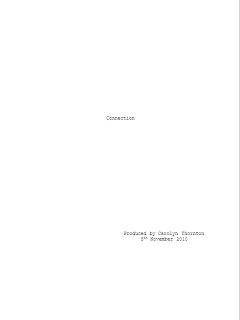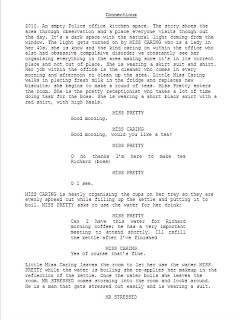As Film Noir become increasingly popular within film making it was important to develop an understanding of the conventions that where associated with this style. The first is themes; all films would be displaying the insecurities of the time period, as well as counter balances the optimism of Hollywood’s musicals and comedies. The second was story, generally they were cynical, hard hitting, disillusion male character who encounters a beautiful promiscuous, amoral, double dealing and seductive “female fatale.” The women would then manipulate him into being the ‘fall-guy’, which often follows a murder. Below is a video of clips taken from Double Indemnity an example of Film Noir and how it is clearly showing the typical story line of a film of this style.
After watching the shot clip of an example of Film Noir we then looked more closely at the type of lighting that has been used and the different positions of the lights. Lighting is used as a way of highlighting and creating shadows that can be used to manipulate the space of a scene. There are two different types of shadows as these as,
- Attached shadows. These occur when lighting fails to illuminate parts of the object due to its shape and size
- Cast shadows. This is when objects block the light source and ‘cast’ a shadow.

 From this picture here we can see an example of a cast shadow. The Blinds are blocking the light source from the outside sunlight and is creating a cast shaddow onto the standing up man. The shadow is easily seen on the mans tie and trousers to the audience where there is the pattern of the blind.
From this picture here we can see an example of a cast shadow. The Blinds are blocking the light source from the outside sunlight and is creating a cast shaddow onto the standing up man. The shadow is easily seen on the mans tie and trousers to the audience where there is the pattern of the blind.This is an example for an Attached Shadow. Looking at the left hand person, the right side of his cheack has failed to be illumined by the light due to his hate size and shape, this in turn has created an attached shadow.
After looking at the different types of shadows we then moved onto looking at how light can have an effect on shape and texture of different objects. We were shown a short video of a lemon being filmed and how the use of manipulating the light source has a dramatic effect on what you are filming.
After watching the film it was really interesting to see how just manipulating the light source can change the texture and shape of the lemon. It was also interesting to see how long you could watch the video before you actually new what the object was. In class we were then asked to create our own lemon video using our own object. As a group we chose to use a dried sweet corn as it had a large range of different textures and colours. By changing the settings on the camera we managed to focus the camera on the sweet corn and it was much easier to see how the movement of light position changed the shape and texture from the audience point of view.





















